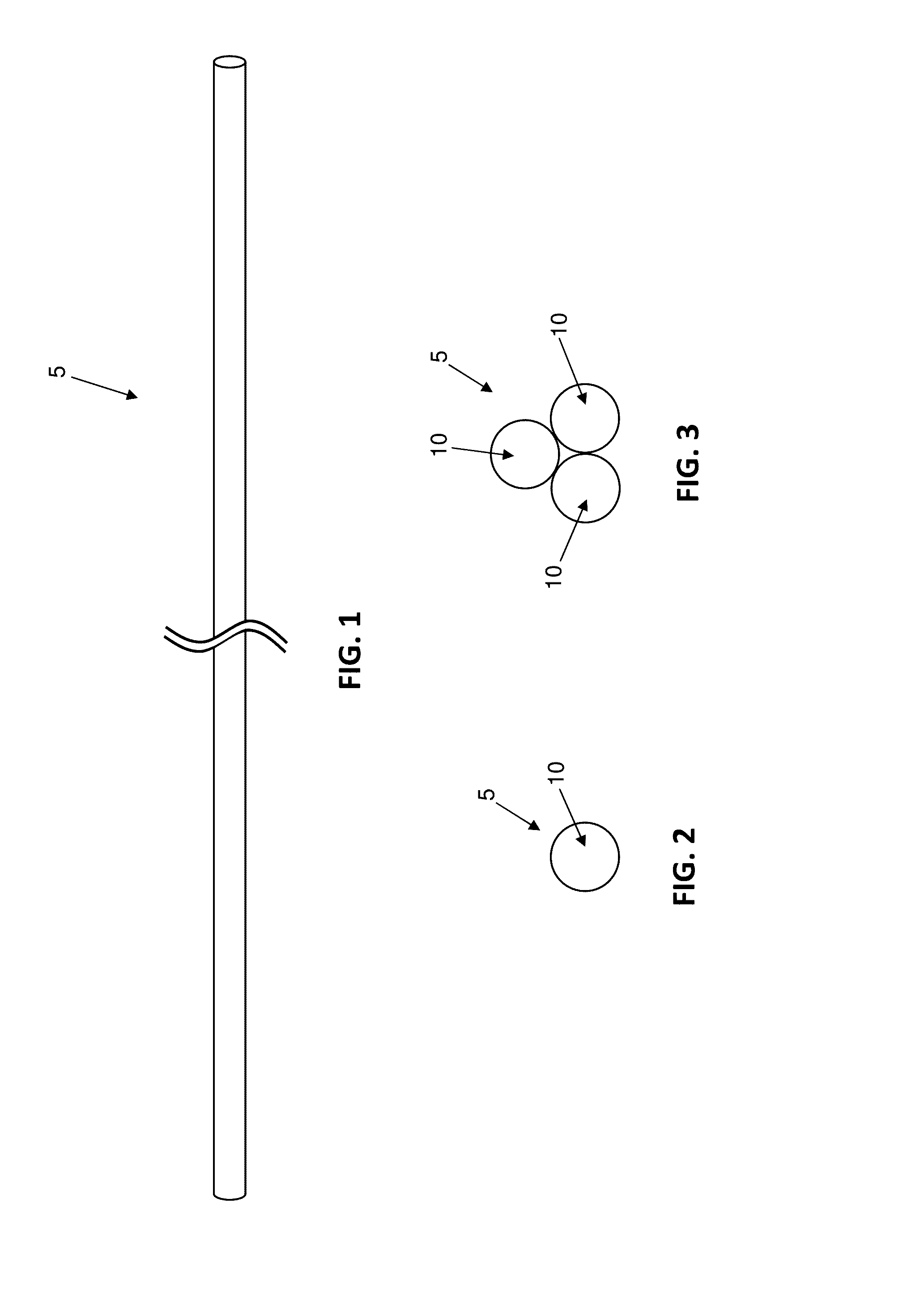Antimicrobial wound closure materials, including antimicrobial sutures, and method for closing a wound using the same
a technology of antimicrobial sutures and wound closure materials, which is applied in the direction of antibacterial agents, surgical staples, drug compositions, etc., can solve the problems of severe morbidity and mortality, and the development of bacterial resistance is unlikely to occur, and achieves good “suture” properties, sufficient tensile strength, and avoidable breakage
- Summary
- Abstract
- Description
- Claims
- Application Information
AI Technical Summary
Benefits of technology
Problems solved by technology
Method used
Image
Examples
example 1
Demonstration of Zone of Inhibition of Taurolidine Impregnated in Poly ε-Caprolactone and ρ-Dioxanone
[0164]400 μl of early phase Pseudomonas aeruginosa (PA01), the Staphylococcus epidermidis (S. epi 35984), and the multidrug resistant Staphylococcus aureus (MRSA) strain SA BAA-44) were plated separately into square plates. 200 μl of each were introduced into 25 cm×25 cm plates and 100 μl were introduced into 15 cm×15 cm plates. Four pieces of each filament were individually placed in the plates. The filaments tested were taurolidine loaded at 2, 6 and 10% dispersed in poly ε-caprolactone and 2, 6, and 10% dispersed in ρ-dioxanone. After 24 hours of exposure the Zone of Inhibition surrounding each filament sample was measured in mm.
[0165]The results of the Zone of Inhibition studies are summarized in FIG. 14 (all measurements are in mm).
[0166]Clearly the Zone of Inhibition increases with the increase in concentration of taurolidine in each of the filaments tested.
[0167]A graphic repr...
example 2
Demonstration of Bacteria Kills with Drug-Loaded Filaments Placed in Solutions with Living Microorganisms (Solution Exposure Experiments)
[0171]In this study, each of the filaments was placed in 12 well-bottom culture discs that had 1 ml Tryptic Soy Buffer containing 100 μl of Early Phase Culture of each of the 3 bacteria: Pseudomonas aeruginosa (PA01), Staphylococcus epidermidis (S. epi 35984), and Multidrug Resistant Staphylococcus aureus (MRSA) strain SA BAA-44.) After 24 hours of exposure, the results shown in FIGS. 17, 18 and 19 were obtained for the three microorganisms tested.
[0172]More particularly, FIG. 17 shows that for an initial concentration of Pseudomonas aeruginosa bacteria (PA01), the amount of kill observed by each test filament correlated well with the concentration of the taurolidine in each. In FIG. 17, each filament tested was as follows:
[0173]PC1=2% taurolidine in ε-caprolactone
[0174]PC2=6% taurolidine in ε-caprolactone
[0175]PC3=10% taurolidine in ε-caprolactone...
PUM
| Property | Measurement | Unit |
|---|---|---|
| diameter | aaaaa | aaaaa |
| diameter | aaaaa | aaaaa |
| weight | aaaaa | aaaaa |
Abstract
Description
Claims
Application Information
 Login to View More
Login to View More - R&D
- Intellectual Property
- Life Sciences
- Materials
- Tech Scout
- Unparalleled Data Quality
- Higher Quality Content
- 60% Fewer Hallucinations
Browse by: Latest US Patents, China's latest patents, Technical Efficacy Thesaurus, Application Domain, Technology Topic, Popular Technical Reports.
© 2025 PatSnap. All rights reserved.Legal|Privacy policy|Modern Slavery Act Transparency Statement|Sitemap|About US| Contact US: help@patsnap.com



